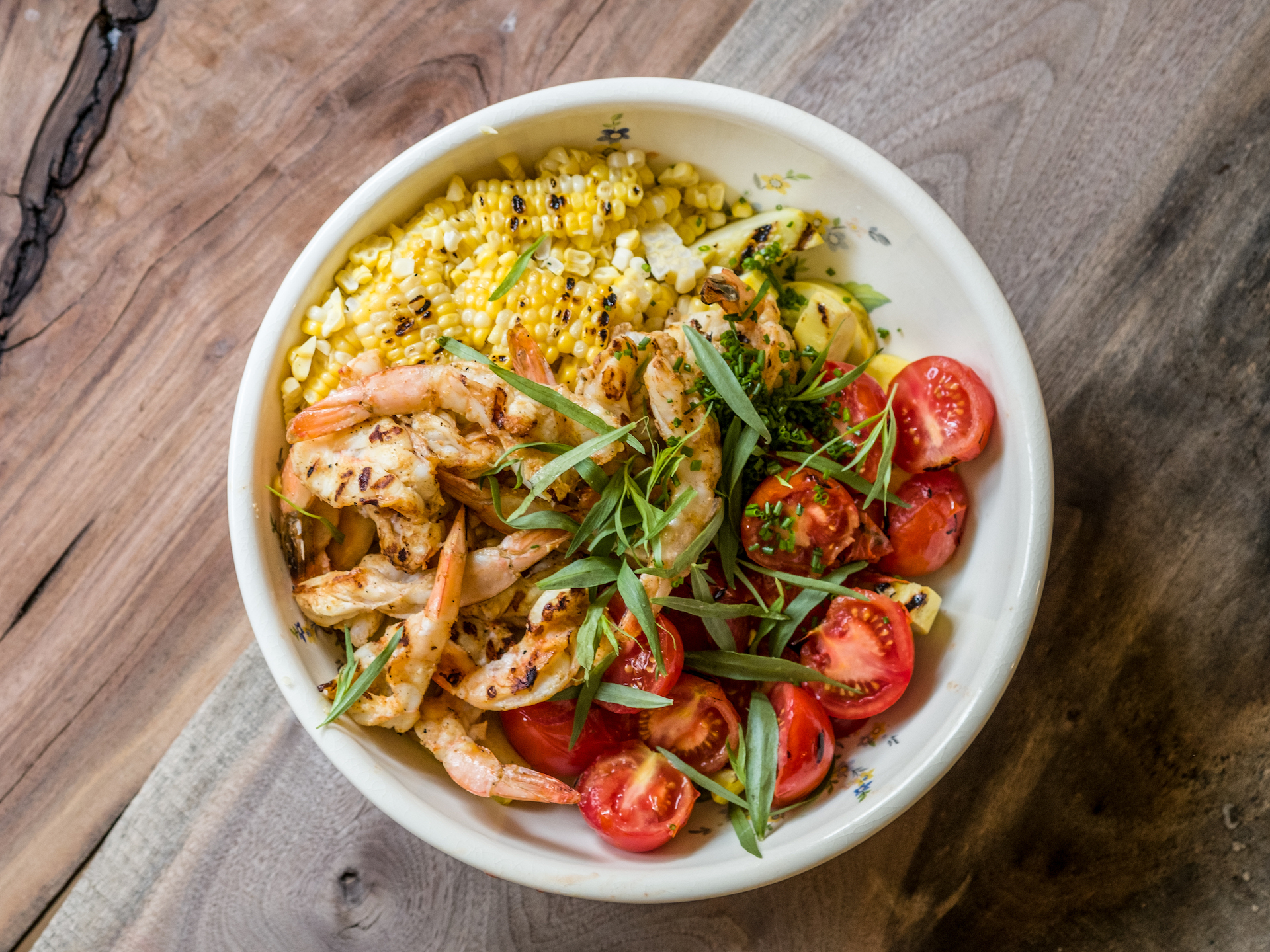Heated Indiscretions
After months of bitter cold, the first warm breeze makes me feel a bit dizzy. My mind races and my body is flushed with a familiar “Same-time-next-year,” syndrome. How have I controlled myself for a whole year, yearning to satisfy my summer passion? I need to get out of this kitchen and uncover my grill!
My love affair with my grill renews every Memorial Day, and is at full throttle by late July and August. The farmer’s market offers almost too much bounty to be consumed. It’s that magic time when everything is at perfect ripeness: the corn is sweet, the summer squashes are firm, full-flavored and not too large, the tomatoes have settled into an acidic candied ripeness.
Everything I pick up at the farmers market is destined to be caressed by my hot steel mistress. My wife, Angie, not only accepts my indiscretions, she actually encourages them, as she is just as smitten with the results as I am.
Grilling can be a stress-inducing and intimidating task, filled with self-doubt. When I first started grilling, every dinner was a battle. I was determined to be the master of the grill by controlling every nuance of both the fire and food. But after months of grilling, I came to realize that you can’t ever fully control the grill, you become one with the grill. Without sounding too zen, you must respect the grill for what it is, and then learn how to work with it.
The biggest mistake people make when grilling is the incessant moving around of items, worrying that if they stay in one place for more than six seconds, they will burn. Strive to become a patient griller. Always wait until the fire is ready, don’t turn the meat before it is seared—just let things cook!
I like to use hardwood charcoal and a chimney starter that doesn’t require charcoal lighter. But if you do use charcoal lighter, douse the coals first then wait one or two minutes before lighting so that the fluid does not immediately burn off. When your coals emit a white-hot glow, spread them out to get at least two different levels of heat on your grilling surface.
I understand with wood or charcoal fires that there is no low-medium, medium-high and high calibration on the dial, so you have to use the slightly masochistic hand-check method. Place your hand over the fire and count the seconds before you have to whisk it away to cool safety. Five to six seconds for a low fire, three to four is medium, one to two is high and less than one is a real “Barn-burner.”
It is also imperative to make sure your grill rack is clean by scraping it down with a wire brush—I like to use the inexpensive wire paint scraping brushes from the hardware store. Then, take a clean rag soaked in vegetable oil and wipe the rack to both clean and grease it for food preparation. Also, make sure to oil and season anything you place on the grill. The oil will prevent the items from sticking, and the seasoning will cook into the items instead of being an afterthought.
Don’t be afraid of a hot fire. The entire reason for using an open fire is to form a crisp crust and to caramelize the product without overcooking. If the fire is at the right heat level, you can let that crust form with confidence and you will also notice that your food will not stick to the grill. Mastering these methods can elevate a backyard amateur into the professional grill-master arena.
Now that you have control of the fire, the perfect summer meal should be delicious and most importantly, simple to prepare. Angie recently brought home a pound of the most pristine wild shrimp. She nestled them next to my farmers market vegetable spoils and sweetly asked, “Can I help you get the grill ready?” Within 45 minutes we were sitting down to a sultry salad of corn—charred for mere seconds and cut from the cob—mixed with crisp yellow squash, ripe, yielding cherry tomatoes and zesty mustard-marinated shrimp. Everything was kissed by the flames and lavished with a tart tarragon and chive dressing. On that hot summer night, it was an affair to remember.





